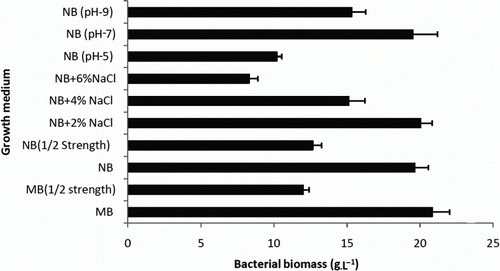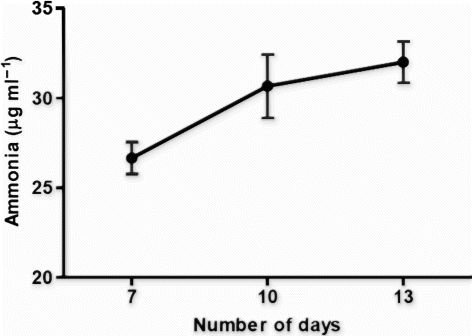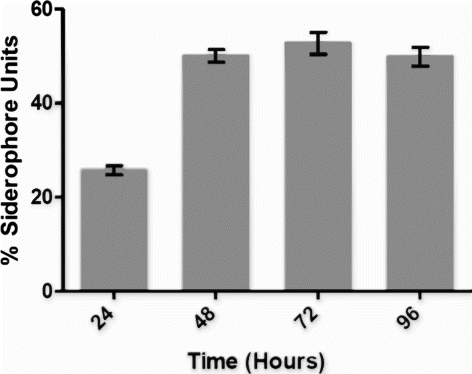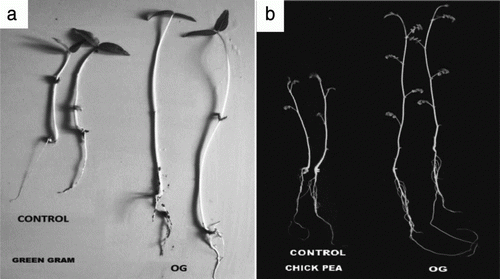Figures & data
Figure 1. Fresh biomass of OG isolate produced in NB and MB 2216 at 48 h of incubation at 27°C with constant agitation.

Figure 2. Phylogenetic analysis based on 16S rRNA gene sequences available from European Molecular Biology Laboratory (EMBL) library constructed after multiple alignments of data by ClustalX. Distances and clustering with the neighbor joining method was performed using MEGA 4.0 software package. Bootstrap values based on 500 replications listed as per percentages at the branching points.

Table 1. Biochemical characterization of Pseudomonas spp. OG.
Figure 3. Graph showing the pattern of phosphate solubilization in Pikovskaya broth up to 13 days by OG isolate. Phosphate solubilized was expressed in µg ml−1.

Figure 4. Ammonia production by OG isolate up to 13 days in peptone water. Ammonia produced was estimated using Nessler's reagent and expressed in µg ml−1.

Figure 5. Graph showing the pattern of increase in IAA production with increase in the concentration of Tryptophan in the growth medium by OG isolate.

Figure 6. Siderophore production by OG Isolate. Siderophore produced is expressed in% siderophore units.

Figure 7. Figure (a) showing the significant difference in PGPB treated and nontreated control seedling of green gram after 10 days, Figure (b) showing the significant difference in PGPB treated and nontreated control seedling of chickpea after 15 days.
